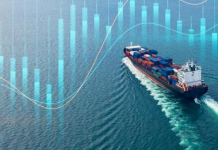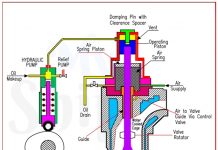
Q. With regards to ordering and receiving fuel bunkers on boards, answer the following:
A. The importance of the correct bunker specifications, including relevant ISO standard.
B. How will you ensure that a representative sample is drawn during bunkering?
C. How will you ensure that in case of bunker disputes especially with regards to quality, the sample from the vessel will be accepted for verification?
Answer:-
A. IMPORTANCE OF BUNKER SPECIFICATION:
- Can lead to various problems related to engine and its auxiliaries
- Can lead to vessel delays and vessel off hire and re bunkering in case of compatibility issues.
- Claims from bunker dispute is complicated due to lack of evidence, representative samples, storage and consumption documents, fuel analysis report ( recently similar problems going on in india with bunker related claims )
- Fuel quality appears to meet required fuel specification, extensive testing of the fuel reveals presence of unusual material
- Linking engine damage has proved difficult and it has been necessary to undertake metallurgical examination of worn or damage components
- When purchasing bunker, it is important that correct grade is specified and sale and purchase agreement includes appropriate description of fuel supplied. This is done by ISO 8217 & identification of the required grade within this standard (eg: ISO 8217:2012 – RMG380)
- Therefore chief engineer to check quality of the fuel to be supplied according to BDN & must at least contain viscosity, sulphur content & density
B. REPRESENTATIVE SAMPLE:
- The most common & most economic means of getting a representative sample is by using a drip type sampler.
- After the checks of documents and bunker quantity on barge, chief engineer should ensure that sampling points are fixed.
- Sampling should be taken at one point only. All sampling should be done either at barge manifold or ship’s manifold. This must be agreed between the supplier and the ship (i.e place of sampling)
- The sample must be representative of the total delivery and ideally taken by ‘drip feed’ at the discharge side of manifold, during the course of pumping.
- Sampling equipment should be used in accordance with the manufacturer’s instructions, or guidelines, as appropriate. Provision should be provided to seal the sampling equipment throughout the period of the supply.
- The primary sample receiving container should be fixed to the sampling equipment & sealed so as to avert tampering or contamination of the sample throughout the bunker delivery period.
- The tube within the sampler & sample valve should be cleaned before use.
- When bunkering starts, keep a container under the sampler, open the sampler valve fully & flush the sampler with fuel. After flushing the sampler, close the valve & fix a suitable clean container to the valve. Adjust the needle valve to give a slow & steady drip. Time the fill rate so that it will provide for the sufficient estimated sample over the expected delivery period.
- On completion of the bunkering, mix together the samples from both containers to assure you have a good, representative sample from bunkering operation.
- After bunkering sample bottles to be sealed, dated & signed by both parties, 4 samples to be taken – one each for ship, barge, lab analysis & MARPOL sample.
C. BUNKER DISPUTES:
- Chief engineer should take care to assure that bunkers supplied matches with the specifications as per the ISO 8217
- To ascertain about the quality of the bunker, it is required to take the samples in the prescribed manner. The sample should be divided into 4 or 5 subsamples. Out of these one should be sent to the laboratory for analysis by the ship. The supplier have to provide ship with the MARPOL sample & the seal number of this must be recorded in the BDN, along with the seal numbers of other samples.
- If the ship’s sample report comes & it reveals the bunker to be of lower quality or not as per specification, ship staff should tender a complaint regarding quality.
- As per the BIMCO standard bunker clause this complaint should be tendered within 30 days of the delivery. After receiving the complaint the supplier will send their sample to the laboratory & will match its result with the ship’s one. Otherwise both can choose an independent laboratory for the testing of the sample.
- BDN should be maintained for at least 3 years & representative sample for minimum 12 months
- Chief engineer should record all relevant information that can lead to the machinery damage due to poor quality fuel. One set of the ship’s sample should be retained on ship for further investigation & litigation.
If there is dispute with regard to quantity & quality following should be done
i. Records of the initial tank soundings, oil transfer details final tank sounding should be maintained
ii. Location of the tanks where suspected bunkers have been used
iii. Ullage sheets & bunker delivery receipts to be kept.
iv. Bunker samples to be kept.
v. ‘Letter of protest’ deck & engine logs must be preserved,
vi. A record of the chief engineer & crew members involved in bunkering operations to be maintained
vii. Name of those present at the time of bunkers samples have been taken
viii. The crew members involved in correcting any problems with the substandard bunkers
ix. Owners must be informed promptly
x. BDN not to be signed & letter of protest to be raised to the supplier. The same to be logged in the ships official log book & E/R Log Book.
xi. The BDN to be signed in MT only for quantity received.



